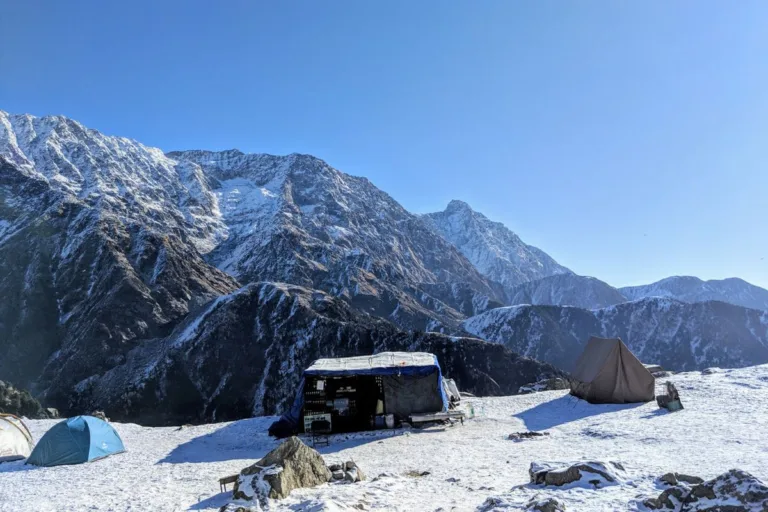Annapurna Base Camp Trek: Everything to know before you go
The Annapurna Base Camp Trek, nestled in the heart of the Nepalese Himalayas, is a journey that promises awe-inspiring natural beauty and cultural richness. Trekking enthusiasts from around the world are drawn to this iconic trail, where towering peaks, lush forests, and welcoming villages await. However, embarking on this adventure requires thorough preparation to ensure your safety, comfort, and enjoyment. In this comprehensive guide, we’ll delve into every aspect of the Annapurna Base Camp Trek, providing you with the knowledge you need to make this journey a lifetime memory.
Permits and Documentation:
Before you set foot on the trail, it’s crucial to obtain the necessary permits. You’ll need both an Annapurna Conservation Area Permit (ACAP) and a Trekkers’ Information Management System (TIMS) card. These permits help fund conservation efforts and provide essential information in case of emergencies.
Choosing the Right Time to Trek:
The timing of your trek greatly affects your experience. The best seasons are spring (March to May) and autumn (September to November). During these periods, the weather is relatively stable, and the scenery is at its most stunning.
Trek Duration and Itinerary Options (Approx. 150 words):
The Annapurna Base Camp Trek typically takes 7-12 days, depending on your starting point and pace. There are various route options, with the classic route beginning in Nayapul and passing through beautiful villages like Ghorepani and Chhomrong. Tailor your itinerary to your preferences and time constraints.
Physical Fitness and Training:
While you don’t need to be an elite athlete, a moderate level of fitness is essential. Prior hiking experience is beneficial, and training your body for long walks with a loaded backpack can improve your endurance.
Dealing with Altitude Sickness:
Altitude sickness is a real concern in the Himalayas. To avoid it, incorporate acclimatization days into your itinerary. Ascend slowly and stay hydrated. Familiarize yourself with the symptoms and know when to descend if necessary.
Accommodations on the Trail:
Tea houses along the trail provide basic lodging and meals. It’s advisable to carry a sleeping bag for added comfort and hygiene. Accommodation can be rustic, so adjust your expectations accordingly.
Packing Essentials:
Packing wisely is crucial for a successful trek. Ensure you have warm clothing, a good pair of hiking boots, rain gear, and a comfortable backpack. Don’t forget essentials like a first-aid kit, water purification method, and power banks for electronics.
Guides and Porters:
Hiring a local guide and porter is a common practice. Guides provide valuable insight into the culture and environment, while porters ease the physical burden of carrying your gear. This also supports the local economy.
Health Precautions and Medications:
Consult a healthcare professional before your trek to ensure you’re in good health. Carry any necessary medications, including those for altitude sickness and common ailments like colds or digestive issues. Hydration and proper nutrition are crucial for your well-being.
Responsible Trekking and Cultural Respect:
As responsible trekkers, we must follow the “Leave No Trace” principles to minimize our impact on the environment. Additionally, respect local customs and culture. Learning a few basic Nepali phrases can go a long way in fostering positive interactions with locals.
Safety Precautions:
Stay updated on weather forecasts and be prepared for sudden changes in conditions. Always inform someone of your trekking plans and expected return date. Carry a reliable map and a compass or GPS device.
Budgeting for the Trek:
Budget for permits, accommodations, meals, and incidentals. Prices can vary, but having a rough estimate of your expenses helps you plan your finances effectively.
Solo vs. Group Trekking:
Decide whether you want to trek independently or with a group. Both options have their advantages. Solo trekking offers flexibility, while group trekking can provide a sense of security and camaraderie.
Enjoying the Scenery and Culture:
Finally, remember that the Annapurna region is renowned for its breathtaking landscapes and rich cultural heritage. Take your time to savor the views, interact with locals, and immerse yourself in the beauty of this remarkable trekking destination.
Trekking Difficulty and Elevation:
The trek is considered moderately difficult. While there are no technical climbs, the high elevation and long days of walking can be challenging. The highest point of the trek is the Annapurna Base Camp itself, which stands at approximately 4,130 meters (13,549 feet) above sea level. Be prepared for steep ascents and descents along the way.
Acclimatization Days:
Acclimatization days are essential for adjusting to the high altitude and reducing the risk of altitude sickness. Common acclimatization stops include Ghorepani/Poon Hill and Chhomrong. Spend these extra days exploring the surroundings or simply relaxing to allow your body to adapt.
Water and Hydration:
Clean, safe drinking water is crucial during the trek. While bottled water is available at tea houses, it’s more environmentally friendly and cost-effective to use water purification methods. Carry a water filter, purification tablets, or a UV pen to make water from streams and taps safe to drink.
Local Cuisine and Tea Houses:
One of the joys of trekking in Nepal is experiencing the local cuisine. Tea houses along the trail offer a variety of dishes, from traditional dal bhat (rice and lentil soup) to momos (dumplings). It’s an excellent opportunity to savor Nepali flavors and recharge after a day of hiking.
Weather Considerations:
Weather in the Himalayas can be unpredictable. While spring and autumn are generally stable, be prepared for occasional rain or snow, especially at higher elevations. Layer your clothing to adapt to changing conditions, and have a good-quality rain jacket handy.
Conclusion:
The Annapurna Base Camp Trek is an adventure of a lifetime, but successful treks require thorough preparation. By obtaining the necessary permits, choosing the right time to trek, and prioritizing safety and cultural respect, you can embark on this journey with confidence. Whether you’re a seasoned trekker or a novice explorer, the beauty of the Annapurna region is sure to leave an indelible mark on your heart, making this trek an experience you’ll cherish forever.







